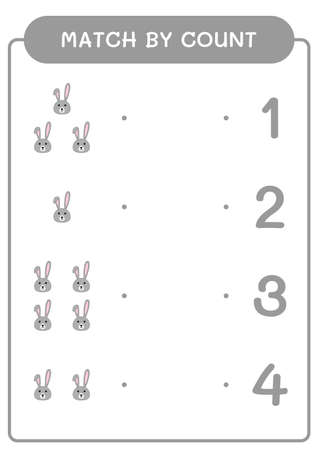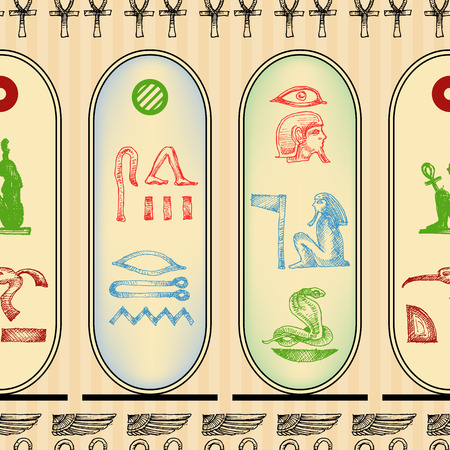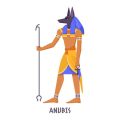The Importance of Journaling in Tarot Practice
In the fast-paced American lifestyle, finding time for self-reflection can be a challenge. That’s where tarot journaling steps in as a powerful tool—not just for tracking your readings but also for personal growth and building a deeper connection to your tarot deck. Keeping a tarot journal lets you slow down, reflect, and make sense of the intuitive messages that come up during your card pulls.
Why Journaling Matters in Your Tarot Journey
When you record each reading, you’re doing more than just taking notes. You’re actively engaging with your intuition and making space for growth. Here are some key benefits that resonate especially well with American readers who value self-improvement and mindfulness:
| Benefit | Description |
|---|---|
| Self-Reflection | Journaling helps you notice patterns in your thoughts, emotions, and actions over time, encouraging deeper self-awareness. |
| Personal Growth | By revisiting old entries, you can see how your interpretations evolve and recognize areas where you’ve grown or where you might want to focus next. |
| Connection to the Cards | Writing about your readings makes each card’s meaning more memorable and personal, helping you develop a unique relationship with your deck. |
| Stress Relief | The act of writing is therapeutic and grounding—something many Americans use as part of their self-care routines. |
| Cultural Relevance | Journaling fits seamlessly into popular American practices like bullet journaling or gratitude journaling, making it easy to adopt. |
Practical Ways to Start Your Tarot Journal
You don’t need anything fancy to get started—just a notebook or an app on your phone will do. Many people in the U.S. love customizing their journals with stickers, washi tape, or color-coding systems inspired by bullet journaling trends. What matters most is consistency; even short daily notes can make a big difference over time.
Sample Tarot Journal Entry Structure
| Date | Question/Focus | Cards Pulled | Your Interpretation | Feelings & Reflections |
|---|---|---|---|---|
| 06/15/2024 | What should I focus on this week? | The Empress, Eight of Cups, Page of Wands | Nurture creativity, let go of old habits, embrace new opportunities. | I feel optimistic about change and ready to try new things at work. |
This simple practice not only makes your readings more meaningful but also helps you bring mindfulness into everyday life—something that fits right in with American values around personal development and wellness.
2. Choosing the Right Journaling Tools
When it comes to documenting your tarot journey, picking the right tools can make all the difference. In today’s fast-paced American lifestyle, we have more options than ever before. Whether you’re a traditionalist who loves putting pen to paper or someone who prefers keeping everything digital and easily accessible, there’s a journaling method that fits your needs.
Popular Journaling Options
| Tool | Pros | Cons | Best For |
|---|---|---|---|
| Physical Notebooks | Tangible, creative freedom, no tech required | Can be lost or damaged, not searchable, takes up space | Hands-on creatives, those who love writing and drawing by hand |
| Digital Apps (like Evernote, OneNote) | Easily searchable, syncs across devices, can add images and links | Requires device and power, some apps cost money | Tech-savvy users, people on the go who want everything in one place |
| Voice Memos | Quick and easy, perfect for recording immediate thoughts, hands-free option | Harder to organize and review, requires listening back | Busy folks, commuters, anyone who thinks out loud or is short on time |
Finding What Works for You
Your choice might depend on your daily routine. For example:
- If you enjoy quiet mornings with coffee and a journal, a physical notebook can turn your tarot reading into a mindful ritual.
- If you’re running from meeting to meeting or juggling family life, digital apps let you jot down insights whenever inspiration strikes—even while waiting in line at Starbucks.
- If your best ideas come during a walk or in the car, voice memos capture your interpretations without missing a beat.
Mixing and Matching Methods
You don’t have to stick to just one method! Many tarot enthusiasts combine tools—maybe you sketch spreads in a notebook but log key insights into an app for easy searching later. Or you might record voice memos after a reading and transcribe them when you have more time. The key is finding what keeps you engaged and makes reflection feel natural for your lifestyle.

3. Effective Techniques for Recording Tarot Readings
Journaling your tarot journey is a personal and insightful practice, and using the right techniques can make your readings more meaningful. Here are some practical methods that Americans can use to document card spreads, questions, interpretations, and emotions for clarity and future reference.
Choose Your Journaling Method
There’s no single “right” way to keep a tarot journal—pick what works best for your lifestyle and preferences:
- Traditional Notebook: Many people enjoy the tactile experience of writing by hand in a dedicated journal or notebook. Choose one with enough space for sketches and notes.
- Digital Journals: Apps like Evernote, Notion, or even Google Docs allow you to organize entries, add images of your spreads, and search past readings easily.
- Voice Memos: If you process thoughts better by speaking, recording voice memos on your phone after each reading can capture your immediate insights and feelings.
What to Record After Each Reading
To get the most from your tarot journal, consistently include these elements in every entry:
| Element | Description | Why It Matters |
|---|---|---|
| Date & Time | When did you do the reading? | Helps track patterns or recurring themes over time. |
| Your Question | The focus or inquiry you brought to the cards. | Keeps your readings purposeful and context clear. |
| Card Spread/Layout | Name/type of spread (ex: Celtic Cross) and card positions. | Makes it easier to interpret meanings later on. |
| Cards Drawn | A list or photo of the specific cards pulled. | Allows for visual reference and further study. |
| Your Interpretation | Your initial thoughts, feelings, and connections between cards. | Cultivates intuition; see how your understanding evolves. |
| Emotional Response | Your mood before, during, and after the reading. | Connects emotional states with tarot insights for deeper reflection. |
| Future Follow-Up | Any actions or intentions based on this reading? | Sets personal goals and tracks growth over time. |
Tips for Detailed Tarot Journaling
- Add Visuals: If you’re using a digital journal, snap a quick photo of your spread. In a paper journal, sketch stick-figure versions of the cards’ positions or use stickers for fun visuals.
- Create Consistent Templates: Develop a simple template so every entry follows the same structure. This saves time and helps spot patterns at a glance. For example: Date → Question → Cards → Interpretation → Emotions → Next Steps.
- Categorize Your Entries: Use tags or color-coding (digital or sticky notes) to group readings by theme—like relationships, work, self-care—so you can look back easily.
- Review Regularly: Set aside time each month to re-read old entries. Reflecting on past readings reveals how much you’ve grown—and sometimes uncovers missed messages that make more sense with hindsight.
- Be Honest: There’s no need to sugarcoat your thoughts or feelings. Authentic journaling fosters genuine self-discovery.
A Sample Entry Template You Can Use:
| Tarot Reading Journal Entry Example | |
|---|---|
| Date/Time: | [Insert date & time] |
| Question/Intention: | [What did I ask?] |
| Spread Used: | [Ex: Three-card pull – Past/Present/Future] |
| Cards Drawn: | [List the cards here] |
| Your Interpretation: | [Write out meanings & connections] |
| Your Emotions: | [How did this reading feel?] |
| Next Steps / Follow-Up: | [What actions will I take?] |
The Power of Reflection in Your Tarot Practice
The more regularly you record your readings—and revisit them—the clearer your intuitive voice becomes. These techniques help transform scattered impressions into organized wisdom that supports both personal growth and deeper connection with your tarot deck over time.
4. Analyzing Patterns and Insights
Once you’ve been journaling your tarot readings for a while, you’ll start to notice certain patterns and recurring themes in your entries. Recognizing these trends is a key part of deepening your self-awareness and tapping into your intuition. Let’s break down some simple steps to help you spot these insights and make the most out of your tarot journal.
Spotting Recurring Themes
Go through your past tarot entries and look for cards, symbols, or messages that keep showing up. Sometimes, you may pull the same card several times in a month or notice similar feelings or questions popping up during readings. These repetitions are signals from your subconscious or the universe, urging you to pay attention.
Common Examples of Tarot Patterns
| Recurring Card | Possible Meaning | Reflective Question |
|---|---|---|
| The Tower | Change or upheaval is a theme in your life right now. | What am I resisting that might need to change? |
| The Lovers | Relationships and choices are at the forefront. | Where do I need more harmony or connection? |
| Nine of Swords | Anxiety or stress is recurring. | What worries keep returning, and how can I address them? |
Tracking Your Intuitive Messages
Your intuition often speaks through subtle cues—gut feelings, emotions, or even dreams that come after a reading. Use your journal to jot down these impressions alongside each tarot spread. Over time, you may see connections between what your intuition told you and what actually unfolded in real life.
How to Record and Analyze Intuitive Messages
- Date Your Entries: Always include the date so you can track timing and frequency.
- Summarize Each Reading: Write a short summary of the main message.
- Add Intuitive Notes: Include any gut feelings or emotional reactions.
- Review Monthly: Set aside time each month to read back over your entries and highlight repeating patterns.
Emphasizing Self-Awareness and Growth
The true value of analyzing your tarot journal comes from the self-awareness it brings. By noticing patterns, you gain insight into areas of growth, challenges you’re facing, and strengths to celebrate. This process helps you use tarot as a tool not just for prediction, but for ongoing personal development—right in line with American values of self-improvement and individual empowerment.
5. Integrating Tarot Journaling into Everyday Life
Journaling your tarot journey doesn’t have to be a big production—it’s about making it part of your regular routine so it feels natural and enjoyable. Here are some approachable ways to weave tarot journaling into daily or weekly life, with examples that fit right in with American habits and culture.
Make It Part of Your Morning Ritual
Many Americans start their day with a cup of coffee, a quiet moment, or even a quick meditation. Try pulling a single tarot card as you wake up and jot down your thoughts in your journal while sipping your favorite brew. This helps set intentions for the day and keeps your practice consistent.
Sample Morning Routine Table
| Time | Activity | Tarot Journaling Tip |
|---|---|---|
| 7:00 AM | Brew coffee/tea | Shuffle your deck while waiting for your drink |
| 7:10 AM | Draw a card | Write down first impressions and feelings |
| 7:20 AM | Reflect quietly | Add any insights or connections to your current life |
Set Up Weekly Group Study Circles
If you enjoy socializing or want accountability, join or start a local tarot group—a popular trend in many U.S. cities. You can meet at coffee shops or libraries once a week, share readings, and compare notes in your journals. This not only deepens understanding but also brings new perspectives from others’ experiences.
Example Group Study Structure
- Location: Local coffee shop (think Starbucks or indie café)
- Frequency: Every Saturday morning
- Activities: Group card draws, sharing journal entries, discussing themes and symbols together.
- Benefit: Builds community and keeps everyone motivated.
Create “Tarot Check-In” Moments During the Week
You don’t have to journal every single day; sometimes a weekly check-in works better for busy schedules. Pick an evening (maybe Sunday night) to review your cards from the past week and reflect on how their messages played out. Write short notes about what resonated or surprised you.
Quick Weekly Reflection Prompts
- What patterns did I notice this week?
- Which card’s message came true or felt meaningful?
- How did my mood or actions shift after certain readings?
- What do I want to focus on next week?
Treat Your Journal Like a Trusted Companion
Your tarot journal is for you—no pressure, no rules. Some people decorate theirs with stickers (a fun nod to American planner culture), others keep it simple with bullet points. The key is making it inviting so you’ll look forward to picking it up, whether that’s daily doodles or once-a-week summaries.
Troubleshooting Common Challenges Table
| Challenge | Easy Fix |
|---|---|
| I forget to journal regularly. | Add reminders on your phone or pair journaling with another habit like breakfast. |
| I feel stuck on what to write. | Use prompts like “Today’s card reminds me of…” or “This symbol makes me think of…” |
| I don’t have much time. | Scribble just one sentence per reading—consistency matters more than length! |
The beauty of tarot journaling is its flexibility. Whether you’re embracing solo reflections each morning or gathering with friends on weekends, find the rhythm that fits your American lifestyle and let your intuitive journey unfold page by page.


